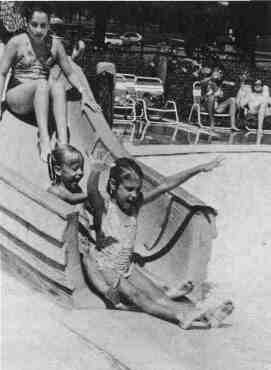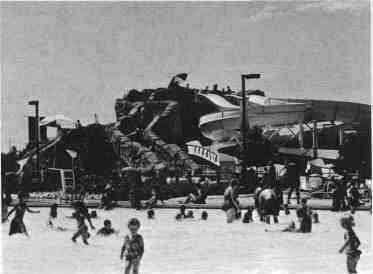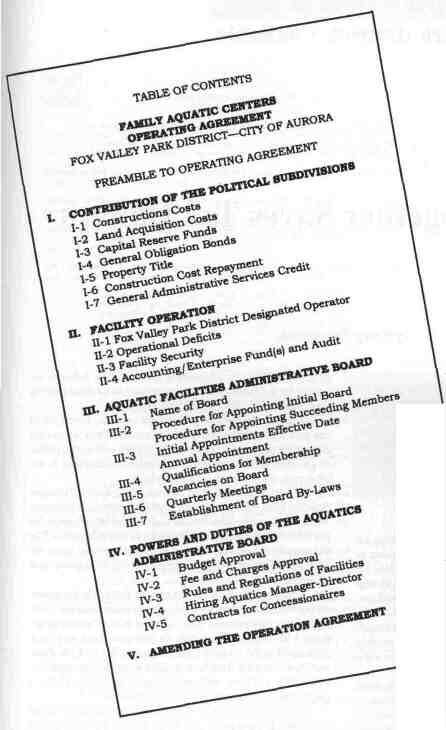Partnerships at Work
park district + city
by Robert W. Vaughan, CLP
Public swimming facilities have historically been one of the most utilized recreational resources in communities throughout the state of Illinois. We have all experienced the dilemma of providing quality swimming opportunities for our constituents. In the late 1980s, the Fox Valley Park District hired a consulting firm to conduct a strategic planning process involving focus group sessions with residents from all geographic regions of the district to better define the future direction of the district. The overwhelming need and desire of the citizenry was to improve the public swimming facilities. The two existing public swimming facilities were traditional rectangular pools built in the early 1950s and were owned and operated by the City of Aurora Recreation Department. (Note: The Fox Valley Park District serves the communities of Aurora, North Aurora, and Montgomery in the Fox River Valley west of Chicago. Public park and recreation services in the district area are also provided by the City of Aurora Municipal Parks Department.)
This was the start of a unique partnership initiative, which laid the foundation for intergovernmental cooperation in the future. The results of the community swimming study indicated that the two aging swimming pools should be abandoned and three new family aquatic facilities be constructed. With the results of the study in hand, the city council and the park district board of trustees agreed to create an intergovernmental agreement providing for enhanced community aquatic recreational facilities.
At the time this agreement was structured, the collar county property tax limitation was introduced in Springfield. This offered a unique opportunity to create a financing mechanism for the development of three aquatic centers, two of which were slated to be constructed after the property tax cap passed. The city of Aurora provides capital financing for the facilities. The park district is responsible to repay 50 percent of the capital costs incurred by the city, exclusive of interest. The language of this clause was reviewed by bond counsel to ensure that this installment contract debt obligation of the park district to the city would be "grandfathered debt" with the passage of the Property Tax Limitation Act. As the managing agency for the aquatic facilities, the park district oversees all construction as well as operational aspects of the facilities. The district receives a management fee for its services equal to 8 percent of the annual operating budget (approximately $40,000) per facility per year.
Illinois Parks & Recreation * March/April 1996 * 35 Overseeing the aquatic operations is a joint governing board consisting of two representatives appointed by the city council, two representatives appointed by the park district board, and one member who is appointed in alternative years by the city or park district. The aquatic operations are accounted as an enterprise fund with all expenses being fully paid out to the individual facilities. The intergovernmental agreement calls for the city and park district to be jointly responsible for any operational deficits on a 50/50 cost basis. If the facilities generate a profit, the surplus revenues remain in the enterprise fund for future capital needs. Construction on the first facility began in 1990 and the 1,500 bather load family aquatic center opened in June of 1991. This facility consists of five water slides, a zero depth edge pool, a hot tub, a water fall, two sand volleyball courts, wet and dry sand play areas and interactive water play devices for children. The facility cost $5.5 million to construct with all of the funding being provided by the city of Aurora. The park district's obligation to pay 50 percent of the capital costs (approximately $2.75 million) began after the conclusion of the first operating season in 1991. The intergovernmental agreement calls for a debt payment to the city from the park district in the amount of $200,000 per year per operating facility. The park district is authorized to sell general obligation bonds to service this installment debt obligation. The second facility is currently in the planning stages and construction will commence in May of 1996. It is anticipated that this facility will cost somewhere between $6 and $7 million. Once again, the home rule municipality will provide all of the capital costs for construction, the district's annual obligation will increase to $400,000 and funding for this payment will come from the sale of general obligation bonds.
This partnership initiative between two governmental units exemplifies the concept of public ownership of community assets. The community has greatly benefited from this team approach to solving a need. Once the second facility is open, we are confident that attendance figures will reach at least 250,000 and the public swimming facilities available to the residents of Fox Valley will be among the finest in the state. This agreement was possible through the vision of the park district board of trustees and the city council. Both organizations have committed themselves to providing state-of-the-art facilities and services to their constituents through an innovative approach within the limitation of the collar county tax cap.
Robert W. Vaughan, CLP, is the assistant director of the Fox Valley Park District.
36 * Illinois Parks & Recreation * March/April 1996
Illinois Parks & Recreation * March/April 1996 * 37 |Home|
|Search|
|Back to Periodicals Available|
|Table of Contents|
|Back to Illinois Parks & Recreaction 1996|
|
|||||||||||||||



